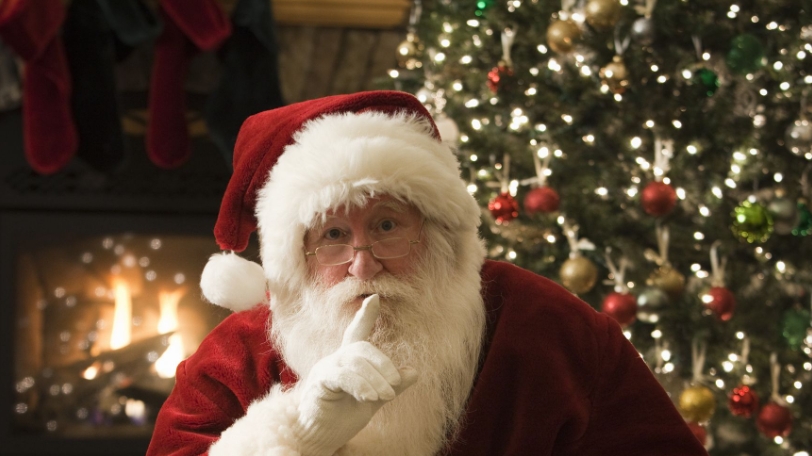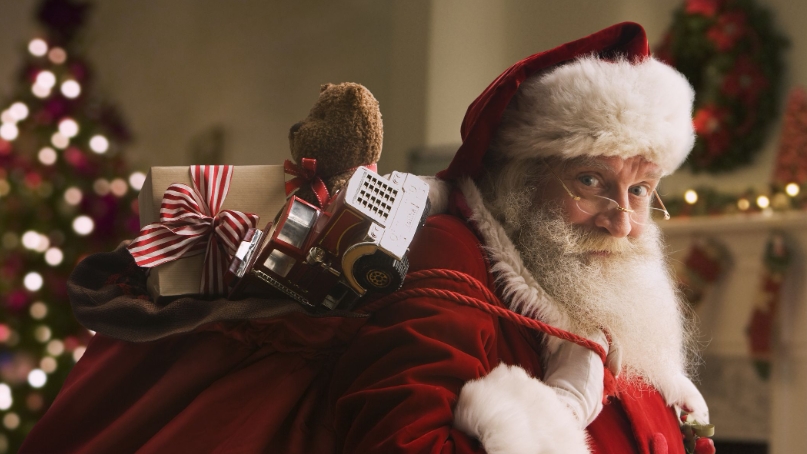As we peel back the layers of this treasured tradition, we’ll find its historical significance and the genuine delight and excitement it offers youngsters throughout the holiday season. This article will take families through the process of writing a memorable letter to Santa, a celebratory art form that transcends the ordinary and becomes a treasured remembrance for years.
A handwritten letter from Santa might add even more excitement to Christmas, especially since this year has been difficult for youngsters. Without spending any money, you can easily do this project and receive a personalized letter from Santa. Relax, breathe in and out! Fun fact, there is no right or wrong way to present a letter from “Father Christmas”
Preparing to Write the Letter
Choosing the right materials
Make your kids use unique festive stationery or their favorite customized notepad. This adds a personal touch to their Santa’s letter, ensuring that he knows they wrote it. If you can, purchase some Christmas-themed pencils and paper.
These might be brilliantly colored in traditional colors such as red, green, silver, and gold. Perhaps your kids might customize their letters with Christmas-themed stickers and photos. If you’re feeling daring, grab some glitter and glue that your kids can use later.
Creating a festive atmosphere for writing the letter.
The festive atmosphere is all that matters since it will enlighten the mood. Make your writing area seem festive by adding ornaments, a Christmas music playlist, and a sense of Santa’s workshop.
Give a warm cocoa break, read a holiday story, and hang fairy lights to create a mystical ambiance. Encourage creativity and tradition by including the entire family in the process.
Encouraging children to think about what they want to say to Santa.
We not only increase the fun of letter-writing by enabling children to think thoroughly about what they want to say to Santa, but we also empower them to share their ideas, emotions, and goals.
Children start on a voyage of self-discovery as a result of this process, and their letters to Santa become more than simply lists; they become windows into the wonderful worlds of their hearts and imaginations, as well as their deepest wishes, aspirations, and thoughts.
Starting the Letter
This might sound a little difficult, but trust me, there is no right or wrong way to do it. Get yourself open-minded and help out that child of yours to start writing that thrilling letter.
Guidelines for addressing Santa Claus.
Begin your letter by wishing Santa a Merry Christmas. This might be “Dear Santa Claus,” or “To Santa”.
When you’re ready to begin writing your letter, write your name and address in the upper right-hand corner of the page. This is vital because it will assist Santa in locating you and delivering the appropriate gifts to you.
Dear Santa Claus or Dear Father Christmas should be the first line of your children’s letter to Santa. They can even add Mrs. Claus and the Elves if they choose.
Expressing Christmas Wishes
Encouraging children to articulate their Christmas wishes and desires.
Parents and caregivers provide a chance for children to focus on what actually brings them joy throughout the holiday season by urging them to express their thoughts in words.
This approach not only improves their communication abilities but also helps them to participate in the enchantment of Christmas in a meaningful way.
The importance of being thoughtful and realistic in gift requests.
While the excitement of Christmas may inspire extravagant fantasies, teaching youngsters the necessity of being both considerate and realistic in gift requests is a wonderful lesson.
Encourage children to think about the practicality of their wants to ensure that expectations match the reality of gift-giving.
Ideas for including non-material wishes
Children learn from this practice that giving and receiving presents isn’t the only thing that makes the holidays special; it’s also about sharing optimism and generosity. Children may contribute to the spirit of giving by writing non-material wants in their letters to Santa.
This helps to emphasize the value of shared joy and creates a narrative around the holidays that goes beyond personal aspirations to include the well-being of others and the wider world.
Sharing Personal Achievements and Behavior
Guiding children to reflect on their behavior and achievements over the year.
This reflection not only helps children to realize their positive deeds, but it also allows them to discover areas for growth, driving them to be better kids the next year in order to receive applause from Santa.
The significance of self-reflection in the letter.
Self-reflection serves as a bridge between the child’s experiences and the spirit of Christmas in the letter, allowing them to convey not just their material wants but also the intangible traits that characterize their character.
Expressing acts of generosity, attempts to assist others, or personal accomplishments demonstrates a real knowledge of one’s actions and their influence on others.

Asking Questions to Santa
If you did not know, Santa loves questions. It would really be nice to make your child shine around this time, at least now you know!
Encouraging curiosity by thinking of questions to ask Santa about his life and work at the North Pole.
Parents and caregivers may build children’s sense of wonder and creativity by getting them to think about the inner workings of Santa’s magical operation, including how the reindeer prepare for their journey or how the elves assemble gifts.
Children are able to actively engage in the wonder of Christmas because of their curiosity, which also gives the holiday season an educational element.
Maintaining the magical and whimsical aspects of Santa’s existence.
Do you have any questions for Santa about life in Lapland? Do you have a question concerning Santa’s elves or reindeer?
When you come to visit us in Lapland in December, Santa will be able to answer your queries personally. It could be a chance for you to see him!
Expressing Gratitude
Importance of including a thank-you section for past gifts and Santa’s hard work.
Thank Santa for taking the time to read your letter and for everything he does over the holiday season.
You’re almost done with your letter; perhaps you’d want to thank Santa’s elves for working so hard this year to manufacture all the goodies. On Christmas Eve, will you leave food for Santa and the reindeer? Perhaps you could tell him everything.
Teaching children the value of gratitude and appreciation.
Encouraging youngsters to include a thank-you portion in their letters to Santa is a great way to teach them the value of thankfulness and appreciation.
This practice goes beyond simply receiving presents; it teaches us to recognize and appreciate the efforts of others.
The Closing of the Letter
How to end the letter in a cheerful and respectful manner.
Furthermore, they might express their enthusiasm for Santa’s coming by saying things like, “Looking forward to your magical arrival” or “Wishing you safe travels on Christmas Eve.”
When you know someone’s name, you can finish a letter with “Yours sincerely” and their name and do not forget to sign.
Suggestions for sign-offs and farewell messages to Santa.
Encourage kids to make a customized farewell that shows their own characteristics.
Whether it’s a cheery “See you soon, Santa!” or a creative “Until the snowflakes whisper again,” let children show their personality by saying goodbye to the jolly figure in red.
Adding Creative Touches
Ideas for decorating the letter with drawings, stickers, or other craft materials.
The letter to Santa Claus is finished; now it’s time to add touches to it and make it appear festive. Allow the youngsters to have additional fun with this by providing tinsel, glitter, and Christmas-themed photos or stickers to adorn the letter to Santa.
Create or print a template of Christmas photos for the youngsters to color. Pictures of Holly, Rudolph, the elves, and the big guy, Santa Claus, in his red coat, are ideal festive images to include in the message.
Sending the Letter to Santa
Options for ‘sending’ the letter
Conventional letter-writing, in which kids address their letters to “Santa Claus, North Pole” and mail them, is still a charming and timeless technique.
During the holidays, several towns put Santa mailboxes where kids can place their letters into decorative containers. However, with today’s sophisticated technology, it might also be sent online, simplifying labor.
Creating a ritual or ceremony around sending the letter.
This is one of the best things that heighten my Christmas season! Writing letters to one another throughout the holidays and enjoying festive food and hot chocolate together may help families create a memorable holiday experience.
A mailbox journey or ceremonial stroll after finishing the letters might turn into a treasured custom. Establishing a letter-writing custom helps families grow closer and makes the holidays a joyful time for everyone.
What to Expect After Sending the Letter
Managing expectations about receiving a response from Santa.
Although the thought of receiving a customized response from Santa is charming, it’s important to clarify that Santa gets a lot of letters, and it might be difficult to write to each one individually.
Parents can explain this to their children in a way that emphasizes the excitement of writing the letter and the thinking and work that goes into wishing Santa a happy Christmas. In addition, the parents might even pose as Santa and write back to them encouraging their children to keep their Christmas spirit alive.
Ways parents can subtly acknowledge the letter’s receipt and contents.
To keep the illusion alive, parents might quietly acknowledge the receipt and substance of the letter to Santa without directly confirming or denying Santa’s involvement.
The magic may be maintained by leaving a modest, celebratory message expressing appreciation for the letter and emphasizing the enthusiasm in the home.
As a fanciful touch, some families choose to leave a path of magical “snow” (flour or glitter) extending from the fireplace or mailbox to the tree to create the appearance of Santa’s arrival.
Conclusion
Finally, writing a letter to Santa is more than just a festive tradition; it is a touching journey that captures the essence of the Christmas season. As kids write down their desires, dreams, and thanks, they enter into a wonderful discussion with the personification of Christmas joy.
The act of writing these letters is a treasured holiday tradition that spans generations, providing wonderful memories that last a lifetime. Every excitedly written phrase, every vivid artwork, and even the choice of salutation are threads woven into the fabric of a family’s Christmas story.
The thrill of Christmas comes to life through these letters, promoting anticipation, thankfulness, and the eternal charm that makes the season so memorable. Let us enjoy this Christmas!



